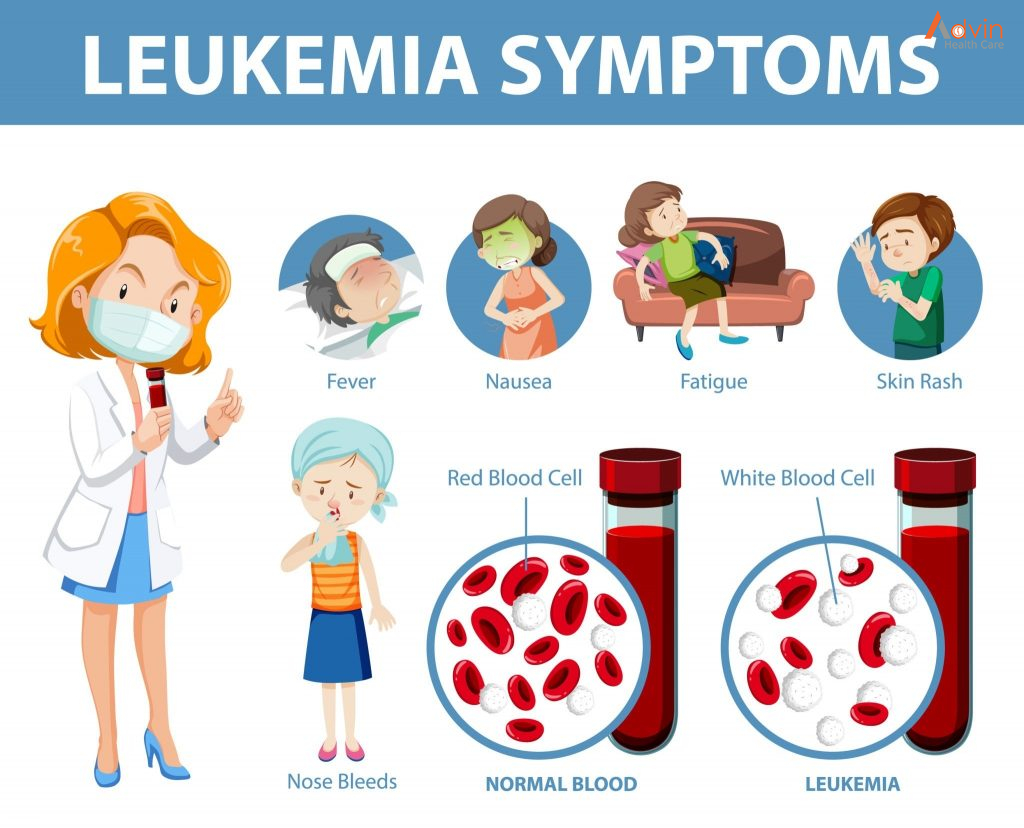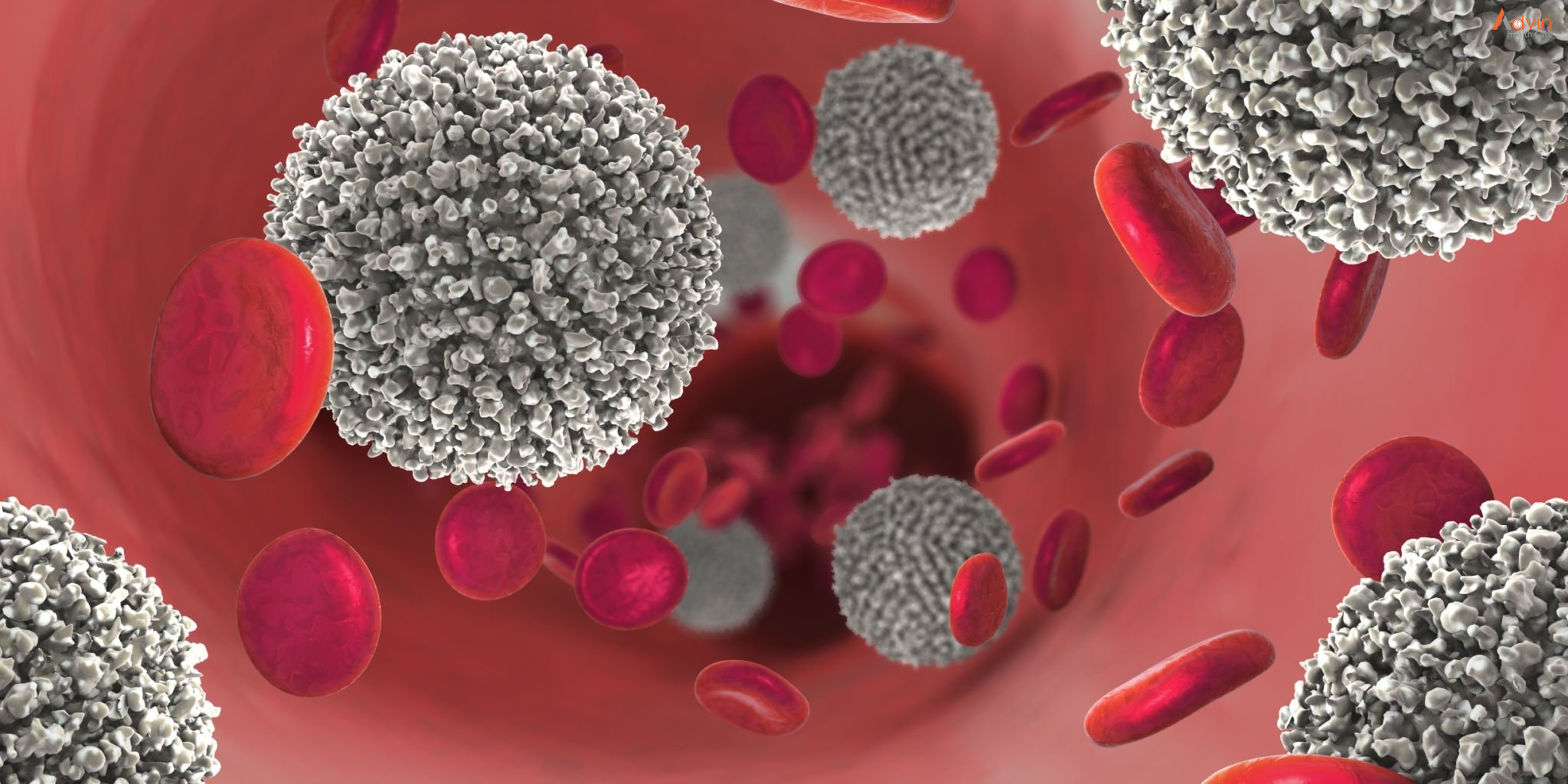Your blood, which accounts for about 8 percent of your normal body weight, plays an important role in how your body functions. As your blood circulates throughout your vascular system, it supplies all of your organs with oxygen, nutrients, hormones and antibodies. Blood is made of an almost equal mix of plasma (the liquid that transports cells, waste and nutrients, among other things) and blood cells (red blood cells, white blood cells and platelets).
When cancer occurs in the blood, it’s usually the result of an abnormal and excessive reproduction of white blood cells. Blood cancers account for about 10 percent of all diagnosed cancers in the U.S. each year. Blood cancers (including leukemia, lymphoma and myeloma) are more common in men than women. Childhood leukemia accounts for about 25 percent of all cancers in children.
Treatments for blood cancers also vary, ranging from active surveillance without cancer-directed therapy to standard cancer treatments including immunotherapies, chemotherapies and targeted agents. “With over 100 different types of blood cancers now recognized, it is important to have an accurate diagnosis prior to deciding on treatment
What is Blood ?
Your blood is made up of liquid and solids. The liquid part, called plasma, is made of water, salts, and protein. Over half of your blood is plasma. The solid part of your blood contains red blood cells, white blood cells, and platelets.
Red blood cells (RBC) deliver oxygen from your lungs to your tissues and organs. White blood cells (WBC) fight infection and are part of your immune system. Platelets help blood to clot when you have a cut or wound. Bone marrow, the spongy material inside your bones, makes new blood cells. Blood cells constantly die and your body makes new ones. Red blood cells live about 120 days, and platelets live about 6 days. Some white blood cells live less than a day, but others live much longer.
There are four blood types: A, B, AB, or O. Also, blood is either Rh-positive or Rh-negative. So if you have type A blood, it’s either A positive or A negative. Which type you are is important if you need a blood transfusion. And your Rh factor could be important if you become pregnant – an incompatibility between your type and the baby’s could create problems.
Types of blood cancer
The three main types of blood and bone marrow cancer are leukemia, lymphoma and myeloma:
- Leukemia is a blood cancer that originates in the blood and bone marrow. It occurs when the body creates too many abnormal white blood cells and interferes with the bone marrow’s ability to make red blood cells and platelets.
- Non-Hodgkin lymphoma is a blood cancer that develops in the lymphatic system from cells called lymphocytes, a type of white blood cell that helps the body fight infections.
- Hodgkin lymphoma is a blood cancer that develops in the lymphatic system from cells called lymphocytes. Hodgkin lymphoma is characterized by the presence of an abnormal lymphocyte called the Reed-Sternberg cell.
- Multiple myeloma is a blood cancer that begins in the blood’s plasma cells, a type of white blood cell made in the bone marrow. Also, learn about the stages of multiple myeloma.
There are also less common forms of blood and bone marrow cancers, or associated disorders, including:
- Myelodysplastic syndromes (MDS): These are rare conditions that may result from damage to blood-forming cells in the bone marrow.
- Myeloproliferative neoplasms (MPNs): These rare blood cancers occur when the body overproduces white blood cells, red blood cells or platelets. The three main subcategories are essential thrombocythemia (ET), myelofibrosis (MF) and polycythemia vera (PV).
- Amyloidosis: This rare disorder, characterized by the buildup of an abnormal protein called amyloid, is not a form of cancer. But it is closely associated with multiple myeloma.
- Waldenstrom macroglobulinemia: This is a rare type of non-Hodgkin lymphoma that starts in B cells.
- Aplastic anemia: This rare condition occurs when key stem cells are damaged and can only be treated with a bone marrow transplant.
Blood cancer symptoms

Some common bone marrow and blood cancer symptoms include:
- Fever, chills
- Persistent fatigue, weakness
- Loss of appetite, nausea
- Unexplained weight loss
- Night sweats
- Bone/joint pain
- Abdominal discomfort
- Headaches
- Shortness of breath
- Frequent infections
- Itchy skin or skin rash
- Swollen lymph nodes in the neck, underarms or groin
Who is at risk for blood cancer?
The risk factors for blood cancer are not fully understood, though it is believed that blood cancers develop from a combination of genetic and environmental factors. Smoking, radiation exposure, and exposure to certain chemicals have all been linked to increased risk of some types of blood cancers. Epstein-Barr virus, HIV and human T-cell lymphoma/leukemia virus infections are also risk factors for developing lymphomas and leukemias.
How is blood cancer diagnosed?
- Leukemia: Your doctor will obtain a complete blood count (CBC) test, which can identify abnormal levels of white blood cells relative to red blood cells and platelets.
- Lymphoma: Your doctor will need to perform a biopsy, which removes a small portion of tissue to be examined under a microscope. In some cases, your doctor may also order an X-ray, CT or PET scan to detect swollen lymph nodes.
- Myeloma: Your doctor will order a CBC, or other blood or urine tests to detect chemicals or proteins produced as a function of myeloma development. In some cases, bone marrow biopsy, X-ray, MRI, PET, and CT scans can be used to confirm the presence and extent of the spread of myeloma.
What are the treatments for blood cancer?

Treatment will depend on several factors. These include the type of blood cancer you have, your age, how fast the cancer is progressing, and whether the cancer has spread to other parts of your body.
Because treatments for blood cancer have vastly improved over the last several decades, many types of blood cancers are now highly treatable. Common treatments include the following:
- Chemotherapy: Anticancer drugs are introduced to the body (via injection into the vein or sometimes by taking a pill) to kill and halt the production of cancer cells.
- Radiation therapy: This form of cancer treatment uses high-energy rays to kill cancer cells.
- Targeted therapies: This form of cancer treatment uses drugs that specifically kill malignant blood cells, without harming normal cells. Targeted therapies are most commonly used to treat leukemia.
- Stem cell transplantation: Healthy stem cells can be infused into your body to help resume healthy blood production following therapy to destroy malignant blood cells.
- Cancer Surgery: This treatment involves removing the affected lymph nodes to treat some lymphomas.
- Immunotherapy: This treatment activates the immune system to specifically kill cancer cells.
Blood cancer treatment and therapy options
Treatment for blood and bone marrow cancers depends on the type of cancer, your age, how fast the cancer is progressing, where the cancer has spread and other factors. Some common blood cancer treatments for leukemia, lymphoma, and multiple myeloma include:
Stem cell transplantation: A stem cell transplant infuses healthy blood-forming stem cells into the body. Stem cells may be collected from the bone marrow, circulating blood and umbilical cord blood.
Chemotherapy: Chemotherapy uses anticancer drugs to interfere with and stop the growth of cancer cells in the body. Chemotherapy for blood cancer sometimes involves giving several drugs together in a set regimen. This treatment may also be given before a stem cell transplant.
Radiation therapy: Radiation therapy may be used to destroy cancer cells or to relieve pain or discomfort. It may also be given before a stem cell transplant.



